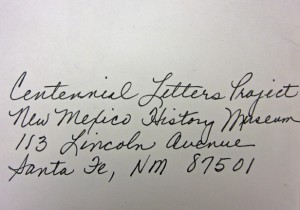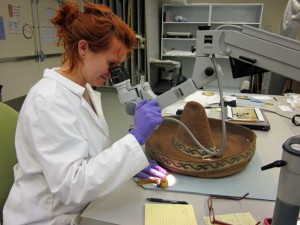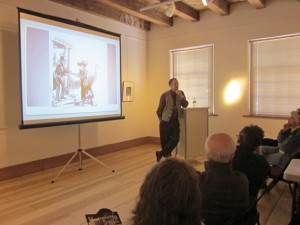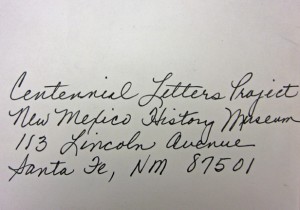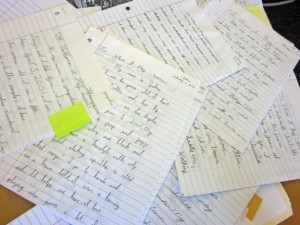 We recently received a lovely stack of hand-written letters from fifth-grade students at Piñon Elementary School in Santa Fe. Their teacher had read about our Centennial Letters Project and the effort to collect the thoughts of New Mexicans on this 100th anniversary of statehood — our gift to the historians who will one day document our bicentennial.
We recently received a lovely stack of hand-written letters from fifth-grade students at Piñon Elementary School in Santa Fe. Their teacher had read about our Centennial Letters Project and the effort to collect the thoughts of New Mexicans on this 100th anniversary of statehood — our gift to the historians who will one day document our bicentennial.
Wrote their teacher:”We have had fun trying to imaging what schools will be like in 100 years. We hope there won’t be budget problems and overcrowding in the classrooms like we have now. My hope for the future is that we will all be using clean, renewable energy, that all children will have enough to eat and live in safe homes. … I know that by being a teacher, I am reaching out to the future and touching lives, hopefully in positive ways. My students learn daily how to resolve conflicts peacefully along with their math, reading, science, and history. I think you (the New Mexicans of 2112) will have very unusual technology from what we use today, but I think 10 and 11 year olds will be very much the same.”
We couldn’t resist sharing some of those 10 and 11 year olds’ thoughts with you. As you’ll see, their young lives are not always easy, but their optimistic outlooks are heartening.
Wrote one: … I live in a cream and tan colored trailer. There are three bedrooms, two bathrooms, one bar, one living room, and one kitchen. … I have a small play room outside. Mostly old people and gangsters live in my neighborhood. There are some kids but they don’t come outside. The park is old and destroyed, so no one can play there. We have lots of goatheads or stickers. …
Another told us of her future hopes and described her absolutely favorite place to eat: … I want to be a fashion designer or an actress. I also really want to become Miss America and Miss Universe. My favorite place to eat at is Golden Corral. They have all sorts of food there. It is a huge buffet that has everything! From Italian to Chinese to steak and mini-hamburgers. Golden Corral even has a huge chocolate fountain. …
One boy spoke of his roots in another nation, one that in 2012 is enduring difficult times that we all hope are resolved by 2112: I am a child of immigrant parents. Life in Mexico is very, very, very, very, very difficult because you don’t live in good conditions. There aren’t a lot of jobs. You can work and barely get paid well. …
On the upside, one girl described life as a fifth-grader in such enthusiastic terms that she kind of makes us want to go back to elementary school: I go to PINON school. I like it there because you learn a lot like Math, Reading, and Spelling. I like homework because you never stop learning, even when you are out of school. I have loved all of my teachers since kindergarten to fifth grade. … I think fifth grade is a great experience. I have to say fifth grade is like being in a place made out of rainbows, and every color in the rainbow means peace. You learn and never stop learning. You can be a smart person thanks to fifth grade.
Want to add your thoughts to our growing stack of letters? Jot down a little or a lot and send them (yes, via snail mail, we’re a history museum, we like old-fashioned things) to this address:

